One of the priceless gifts Mother nature gives to Da Nang is an array of caves and caverns. Almost all are located in the Marble Mountains, a complex of five marble and limestone hills, 10-mins drive from the downtown. There, the grottoes own interesting rock formations to marvel at, temples where pilgrims visit daily to pray and old inscriptions. Especially, each of them can be connected to each other, by visual and underground passages and tunnels. One of the Marble mountains’s caves is thought to have a connection with the sea, by a subterranean river that may begin from its bottom. During the Vietnam war, the caverns became places to hide for communists and some of their leaders. In this article, you need to know about Da Nang’s caves and caverns. Hopefully that the information is rich enough, helpful for your exploration ahead.
See also:
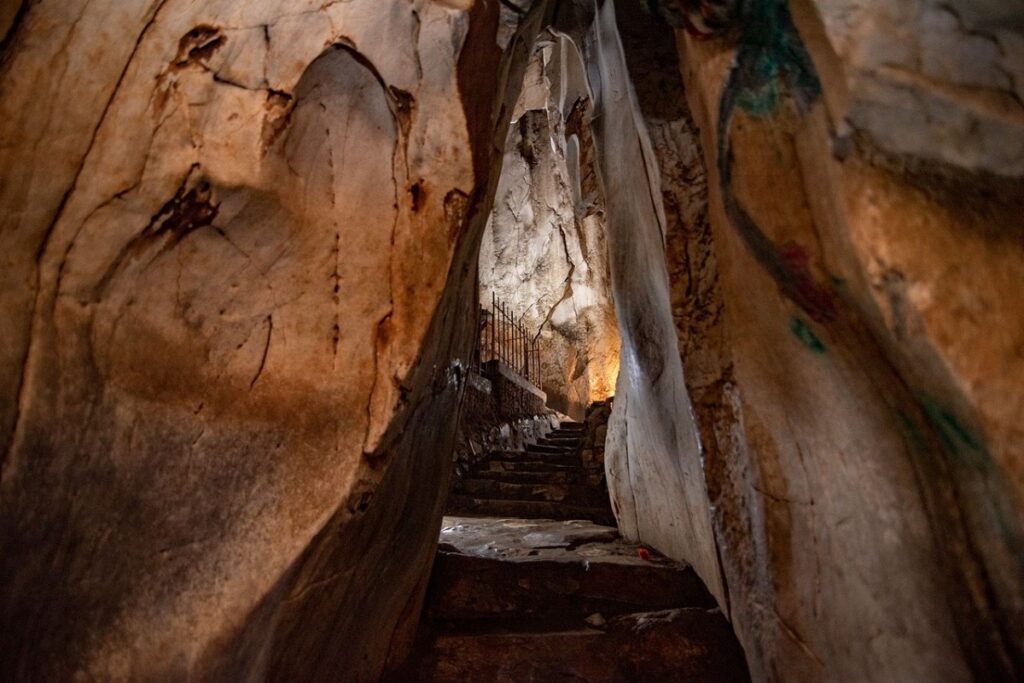
Table of content
- 1 Huyen Khong Cave (including Hoa Nghiem Cave)
- 2 Am Phu Cave – “The Hell Cave Da Nang”
- 3 Tang Chon Cave
- 4 Van Thong Cave
- 5 Linh Nham Cave
- 6 Quan Am Cave
- 7 Huyen Vi Cave
- 8 Da Nang Cave Tour
- 9 Related Posts
- 10 Non Nuoc Beach: The Famous Beach of Da Nang
- 11 How to Get from Da Nang to My Son Sanctuary
- 12 Bach Ma National Park: Hiking, Trekking in Da Nang and Hoi An
- 13 Am Phu Cave Complete Travel Guide
- 14 Asia Park and Sun Wheel in Da Nang (Sun World Da Nang Wonders)
- 15 How to Get to Golden Bridge from Da Nang
- 16 Da Nang Food Specialties: What to Eat in Da Nang
- 17 How to Visit Golden Bridge Vietnam
- 18 Da Nang Shore Excursions: Guided Tours From Tien Sa Port
- 19 Han Market (Cho Han): Where to Shop in Da Nang?
- 20 Da Nang Cathedral (Da Nang Pink Church)
- 21 Things to Do in Ba Na Hills Besides Golden Bridge
- 22 Da Nang Half Day Tours
- 23 Da Nang Private Car and Driver
- 24 Da Nang and Hoi An Itinerary for Visitors Staying Overnight in Hoi An
- 25 Da Nang Things to Do: Guide to What to Do in Da Nang Vietnam
- 26 Da Nang Best Things to Do and Reasons
- 27 How to Get From Hoi An to Da Nang
- 28 Hoi An or Da Nang: Which is Better?
- 29 My Son Sanctuary Tour
- 30 Featured Tours and Experiences
- 30.0.1 Golden Bridge and Ba Na Hills Night Tour
- 30.0.2 Golden Hands Bridge Tour In Sunrise or Sunset (1/2 Day)
- 30.0.3 Cam Kim Island Bicycle Tour From Hoi An
- 30.0.4 Cham Island Tour From Hoi An (Group Tour)
- 30.0.5 Cham Island Tour From Da Nang (Group Tour)
- 30.0.6 Hoi An Vegetarian Food Tour
- 30.0.7 Hoi An Evening Walking Food Tour Through Laneways
- 30.0.8 Private Hoi An Basket Boat Tour (Shuttle Bus, Bicycle, Bike)
- 30.0.9 Half-day Am Phu Cave Tour (Private)
- 30.0.10 Hoi An Countryside Tour (Bicycle, Car, Electric Shuttle)
- 30.0.11 Da Nang Tour Package From Singapore
- 30.0.12 Hoi An Evening Tour From Da Nang
- 30.0.13 Hoi An Walking Food Tour Through Laneways
- 30.0.14 My Son Sanctuary and Hoi An Old Town Tour with Thu Bon River Cruise
- 30.0.15 My Son Day Trip From Hoi An including Marble Mountains and Basket Boat
- 30.0.16 Half Day Hoi An City Tour With River Cruise
- 30.0.17 Son Tra Peninsula Tour with Marble Mountains (Private/Small Group)
- 30.0.18 Hue Day Trip From Hoi An with Hai Van Pass, River Cruise & Lunch
- 30.0.19 Hoi An Ancient Town and Countryside Tour (Bests of Hoi An Tour)
- 30.0.20 Hoi An Tour From Da Nang Airport (Private, Optional Lunch)
- 30.0.21 Hoi An Day Trip From Da Nang (Marble Mountains, Basket Boat, Old Town)
- 30.0.22 Da Nang City Tour From Airport (Private, Optional Lunch)
- 30.0.23 Hoi An City Tour with Lantern Class, Lantern Boat, Night Market & Local Food Sampling
- 30.0.24 Marble Mountains, Basket Boat Ride & Hoi An Old Town Walking Tour
- 30.0.25 Marble Mountains & Golden Bridge Day Tour with Buffet Lunch
- 30.0.26 Marble Mountains & Monkey Mountain Tour (Half-day, Private)
- 30.0.27 Private Golden Bridge Sunrise Tour (Half-day, Optional Lunch)
- 30.0.28 Hoi An Ancient Town & Golden Bridge Day Tour (Private/Small Group)
- 30.0.29 My Son Sanctuary & Golden Bridge Day Tour (Private/Small Group)
- 30.0.30 Private My Son Sanctuary Sunrise or Sunset Tour
- 30.0.31 Full Day Hoi An Ancient Town & Countryside Experience With Local
- 30.0.32 Full Day My Son Sanctuary & Hoi An Countryside Tour With Local
- 30.0.33 Full Day Hoi An Ancient Town & Coconut Village Experience
- 30.0.34 Son Tra Peninsula, Marble Mountains and Hoi An City Tour
- 30.0.35 Half-day Marble Mountains Tour from Da Nang or Hoi An
- 30.0.36 Da Nang Cave Tour (Half Day Underground Tour in Da Nang)
- 30.0.37 Hoi An Old Town & Lantern Making Class (Morning Tour, Half-day)
- 30.0.38 Full Day Bests of Da Nang & Hoi An Old Town Walking Tour
- 30.0.39 Full Day My Son Tour From Da Nang with Da Nang City Tour
- 30.0.40 My Son Sanctuary Tour From Hoi An or Da Nang With Local Guide
- 30.0.41 Hue Day Trip from Da Nang or Hoi An via Hai Van Pass with Lunch
- 30.0.42 Full Day Golden Bridge & Ba Na Hills Tour With Buffet Lunch
- 30.0.43 Full Day My Son Sanctuary Tour & Hoi An Old Town With Local
- 30.0.44 Half Day Da Nang Museums and Bridges
- 30.0.45 Da Nang City Discovery
- 30.0.46 Da Nang at a Glance (The Best Half Day Da Nang City Tour)
- 30.0.47 Full-day My Son Tour From Da Nang or Hoi An & Marble Mountains
Huyen Khong Cave (including Hoa Nghiem Cave)
Huyen Khong Cave In General
Huyen Khong cave is the largest in the Marble mountains and Da Nang caves in general. Located near Tam Thai pagoda, it’s all signatures of the kind in the complex: open ceiling and containing temples. The entrance of it is a high dome called Hoa Nghiem cave and was added with a marble Lady Buddha sculpture in 1960. The oldest stele of Da Nang was carved on the nearby wall (name is Pho Da Son Linh Trung Phat). That dates back from the 17th century, informing specific individuals who donated money to renovate the pagodas. Many of them lived in Hoi An village, the first time the name of the town was mentioned in our knowledge. Entrance of Huyen Khong cave is to the left.
Blessed by Mother nature, Huyen Khong cave features a large chamber enclosed by rock walls vertically cut by flows of rain water. Sunlight falls into it through 5 holes of its ceiling, which are thought to be Buddha fingers, from a height of 30 meters. During sunny days, travelers have the chance to view breath-taking and magic lightfalls. The scene appears in tourism promotion videos of the city many times. Due to the holes, the floor is always wet and quite muddy from dropping water in the rainy season.
Before becoming a Buddhist sacred site, Huyen Khong cave might house temples of Cham people to venerate Hindu gods. Historians believe in that, because there are various sculptures discovered in this grotto. Some of them date back from the 10th century. At the stairway of the entrance, 4 statues of guardians are testimonials of how Vietnamese people reused deity statues of another religion. New people painted hot colors on the former stone ones, with a strong attitude on the face to remind the comers to behave respectively to holy personalities inside.
Temples in Huyen Khong Cave
Four temples are built in Huyen Khong cave’s main chamber. All lean against the rock and share the spacious space in the front. Below the Gautama Buddha, Ksitigarbha Bodhisattva is worshiped. To its left side, there is a temple for worship of Ngoc Phi goddess who owns the Marble mountains in local belief. She manages and makes decisions for everything. That is the reason why her shrine is busier than others. There, oath ceremonies took place formerly to judge right from wrong, because nobody was brave enough to lie before her authority. If don’t tell the truth, the speaker will be punished. Participants must drink raw chicken blood to start the ceremony. Temple for her younger sister, Loi Phi goddess on the other side. It’s smaller but still sacred. Locals usually come to pray for good health, favorable career, high security and childrens.
Located in a separate location, the largest temple Trang Nghiem Tu was established in 1825 and rebuilt in 1907 after typhoon damages. It’s dedicated to Lady Buddha in the middle, Quan Cong in the left and God of Matchmaking and Marriage to the right. Visitors who are seeking a partner usually come here. Short walk from it, tour guides will tourists about 2 women breast-like rock formations. Many local infertile women have been relying on a miraculous response for their wish in being pregnant after touching on that stalactite. They also drink the water flowing down from, before walking in the Buddha altars. Unfortunately, one stopped producing water when the Thanh Thai king handed it in.


Am Phu Cave – “The Hell Cave Da Nang”
Am Phu Cave History
At the foot of Thuy Son, Am Phu Cave has been known for a very long time and people always wonder about how large it is. Many explorations were carried out in history to find out the truths but none of them was successful. In the 19th century, Minh Mang king sent 12 soldiers into the cave one by one with lighting touches but failed. Someone also tried to throw into it a pomelo carved with letters to mark and then discovered that one on a nearby beach. Since then, locals have thought that there is a river flowing from it to the ocean.
During 2 most recent wars, this enormous cave was the hiding place of communists. Its chambers and fresh water in the bottom of the cave support people’s residence. Moreover, it has numerous corners and holes that are hard to access but great to keep secret of all activities. When the occupying army comes, their interconnection allows dwellers to move to other places quickly. The largest room housed a field hospital to cure or heal injured soldiers and local inhabitants living close by. “How to get there” was frequently asked by French and Americans but the location of it was always in forbidden. Am Phu cave’s mouth was fully-covered by falling stones from bombings and opended a few years before welcoming first visitors. Among all Da Nang caves, here most Vietnam war stories are shared.
A Visit in Am Phu Cave
Besides excellent natural features, Am Phu Cave provides many interesting Buddhist concepts about the journey of dead people to the next life. Right behind the ticket check, there is a bridge where the souls have to cross over before judges about their actions when still alive. Two stone ox-head and horse-face guards and big python snakes in the entrance are responsible for escorting the souls to the Last Judgment. Under the bridge, many hands of fallen souls rise above the river because they are pushed down by the beasts. People passing safely are believed to live kindly on the Earth.
To go further, the souls need to go through a tunnel. In the beginning, its walls are engraved by the mandarins checking which one comes on the right day or not, written on their book. In Vietnamese traditional thought, all life on Earth has a clearly-defined fate, including the death day. If name and day are right, the soul will attend the Last Judgment. Opposite to, must return to the human world and wait until their right day. In this case, the souls become homeless and wander around to seek things to eat to survive. With a love for them, local people hold ceremonies and make lots of food on the 15th day of the 7th lunar month to give.
To its left side of Am Phu cave’s chamber, visitors can see a statue of the Judge. He holds a book and an ink brush, uses the Justice balance to determine good and bad actions for each soul. After that, an exact decision is considered and made. To the right, there are Ten Kings of Hell who are in charge of the Nine Circles of Hell and a pond where locals often wash their face with its water, to get rid of stresses and worries in life. The steps leading to the Hell floors are close by. Different karma situations in Buddhism are shown there, to tell us what happens to the souls if they have not morally correct actions. In the end, that is a part of an underground river.

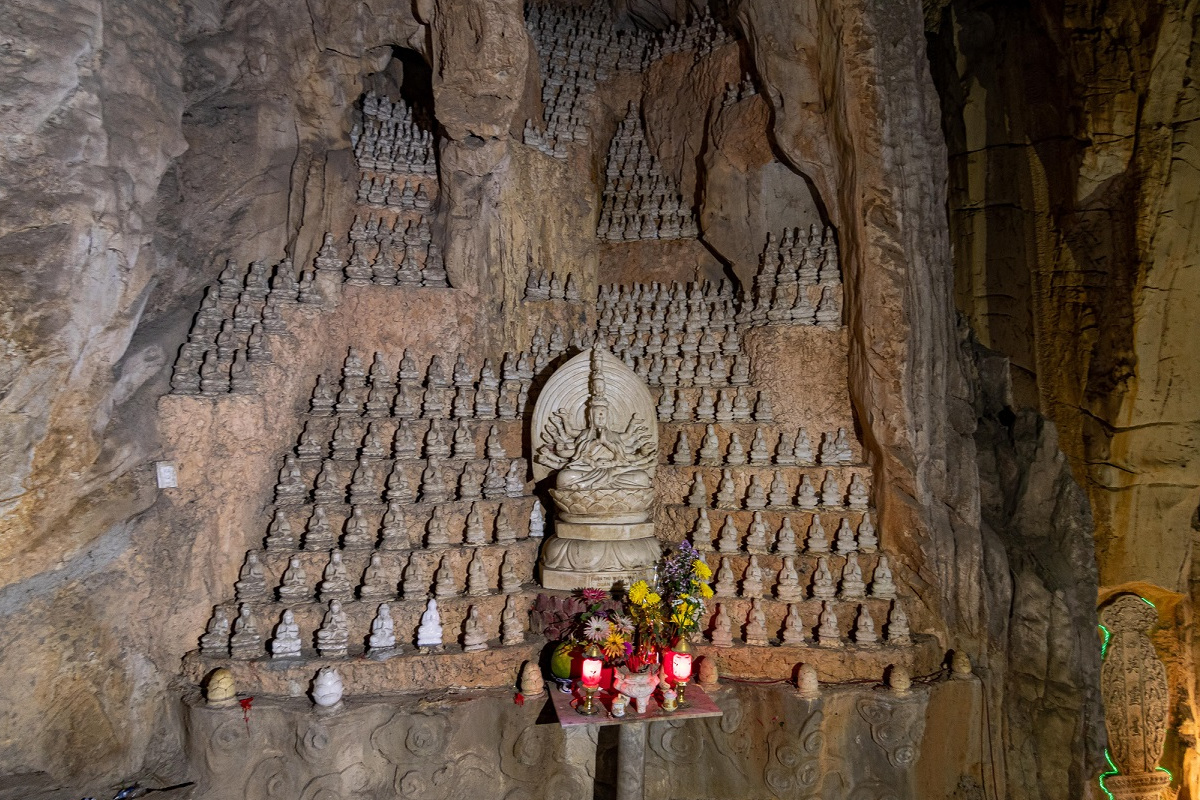
Tang Chon Cave
Behind Linh Ung Pagoda, there is a series of open-ceiling caves, totally known as Tang Chon Cave. The name means “containing all truths of universe”. Historically, the first monks coming to the mountain lived there to practice Buddha teachings. Its entrance features a quite-low vault that may make visitors have to bow to walk through easier. To the right, there are 3 tall honey locust trees planted 160 years ago. All were registered as Vietnam’s heritage trees in 2017.
In the end of the passageway, the largest chamber owns a simply-designed temple built in 1825. It consists of 3 altars for worship of the Great Buddha in the middle, Taoist gods and the Mother goddesses on either side. To its right, the small grotto is added with two marble statues depicting fairy men playing chess together. To the other side, there are a trio of caves, each with its own name. Cham people venerated their gods in all of them in the past and a sandstone altar in the middle cave is testimonial. Nowadays, Vietnamese put Buddhas instead of. Travelers can find the way to climb up the high locations of the mountain by steep steps, beginning from two caves. Not highly recommended to do, because of safety reasons, and for a solution, reaching the top (the Heaven gate) by steps behind Tam Thai pagoda. Should be.

Van Thong Cave
Between two natural-created gates with trees growing over, Van Thong means “way to the Heaven”. Meaning that visitors can climb up to high elevations of the mountain by this tunnel-like grotto. Remember to be careful if you like to explore and it’s needed to return by the same way. Like other places, local Buddhists arrange an altar to honor Buddha here. Down the steps, the explorers can rest, enjoy the fresh air and get a cold drink in a small beverage stand. There, cheap stone souvenirs for sale are available.
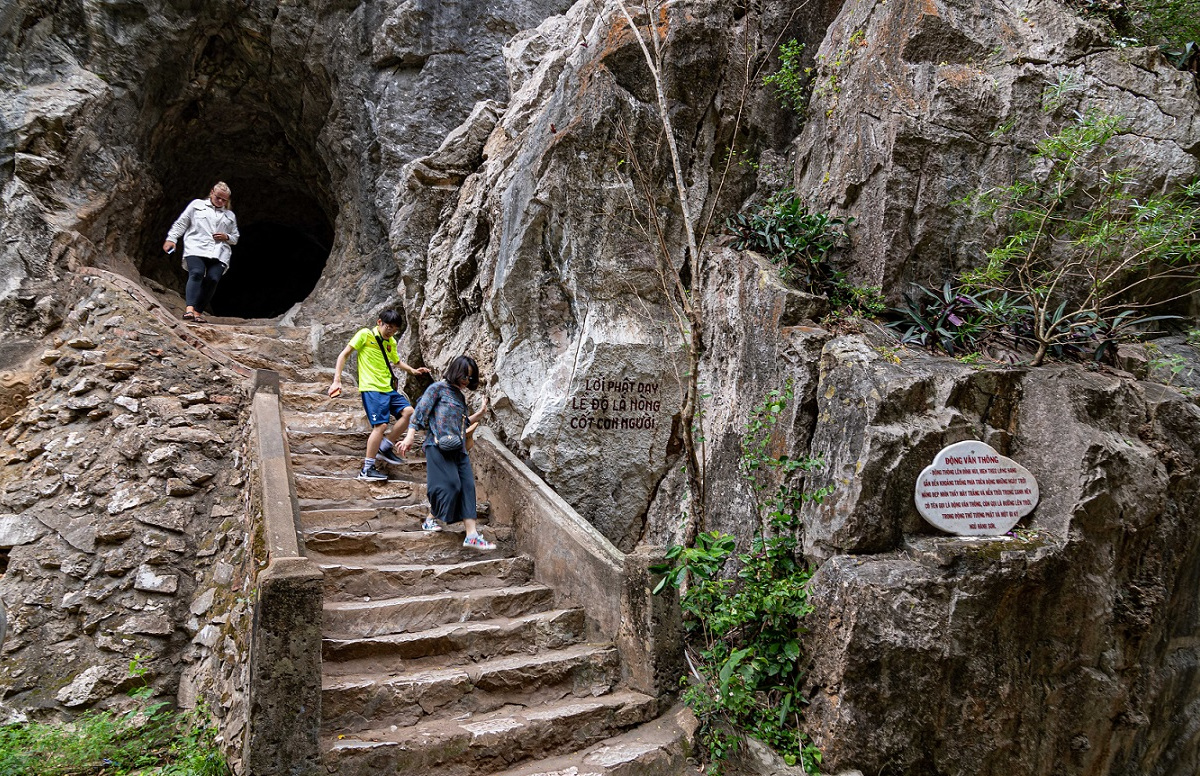
Linh Nham Cave
Steps leading to this small cave is from the back of Tam Thai pagoda. It houses an altar to worship a statue of the God of Heaven, brought from Huyen Khong cave. In the past, people put the Lady Buddha there.

Quan Am Cave
In 1956, the leader monk of Kim Son mountain’s pagoda discovered this group of Da Nang caves. In previous nights, the Lady Buddha told him about it and based on what she says, he found it successfully. Moreover, a rock formation with similar shape to the Buddha is also seen. Thereafter, Buddhist and local followers come to pray a lot. Visitors need to use flashlights to see the walk around and cave decorations. In the end, there is a cool-water stream where prayers often wash their faces.
Huyen Vi Cave
Discovered in the first half of 18th century, this 20m2 cave is in the Fire mountain, possibly to be accessed from Su Van Hanh St. It’s named by Minh Mang king in 1825 and he also hired Non Nuoc marble village’s artisan to carve the words on its entrance. In 1960, local monks widened its mouth, to allow pilgrim’s entry much easier. Within it, many Buddha statues and stone objects are added. Visitors don’t need to pay any fee to sightsee but trek up over many steps.
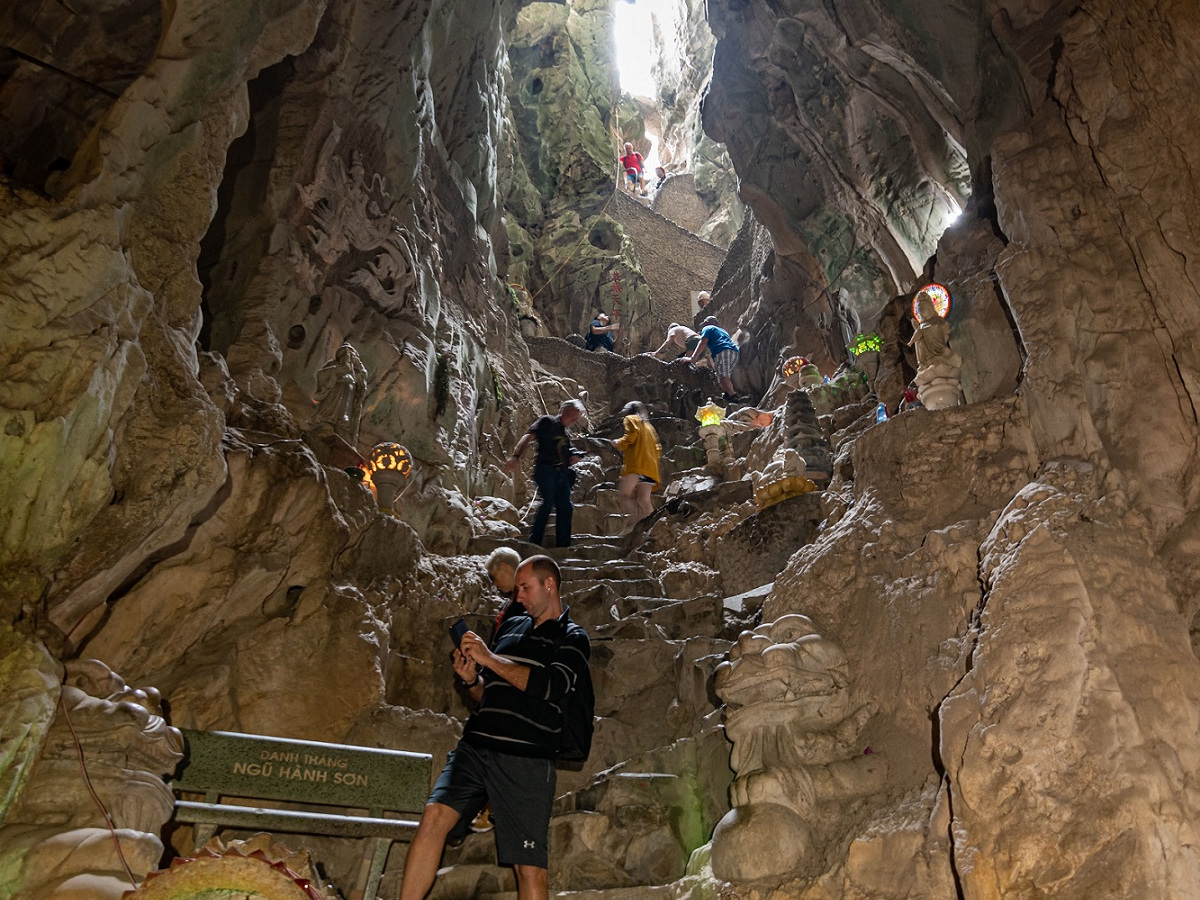
Da Nang Cave Tour
Why Join a Tour to Da Nang Caves?
Da Nang caves themselves are invaluable natural creations that the God gives the city. There, travelers have opportunities to discover walls with perfectly-sculpted rock formations varying in size and shape. Thanks to the ceiling being leaky, it’s possible to see brilliant lightfall in large grottoes. Check out in social media, there are definitely numerous videos showing this fairy scene. Tourist guides often share interesting folk tales about how the special ones were formed and related to local culture. Moreover, the caves also have small temples playing an importance role in spiritual life of many people. Because of no on-site introduction available, it’s not easy to know their history, the gods worshipped and costumes. If travel with a guide, really no problems!
Moreover, the caves also contain old inscriptions in Chinese letters. Absolutely, the content of the carvings and steles re nice to listen to. Due to high historic and religious information, the city committee has been submitting the Marble Mountains’s inscriptions to be a Unesco heritage. Outside of the caverns, centuries-old Buddhist pagodas and picteresque sceneries are bonus, to make the trips worth it and unforgettable.
Options of Da Nang Cave Tour
Private Da Nang Cave Tour
Exploring Da Nang caves with a local English-speaking guide who knows all the secrets behind themselves and their temples, is a should do. Through his stories, travelers definitely understand deeper about history and natural sculptures. Some of what he says are never mentioned in the guidebooks. In addition, he also recommends an itinerary in which every highlight is not missed and sometimes helps to avoid the crowds. Nice places to eat, do, buy souvenirs and explore the surroundings are not ignored. Travelers can arrange transportation by themselves or via contacts below.
If you would like to find a local guide (knowledgeable, fluent in English), we can help you and your family. Just leave a message in our whatsapp (+84) 968009827 or email centralvietnamguide@gmail.com.
Half-day Da Nang Cave Tour
Starting in the morning or afternoon, a half-day to marvelous caves in the Marble Mountains, can include some must-visit places in the city. There may be the Lady Budda, the tallest of the kind in Vietnam, Cham sculpture musuem, the Dragon bridge, the Pinck church, markets or beaches. Inclusions often are hotel pick up and drop off in Da Nang center, air-conditioned car, entrance tickets, water, local tour guide and experienced driver. If departing in the morning, the guide will recommend things to see and do in Da Nang for the rest of the day.
To know the best options for yourself or family, leave a message in whatsapp number (+84) 968009827 or send an email to centralvietnamguide@gmail.com. Advice are provided for free and from the heart of locals, thank you!
Full-day Da Nang Cave Tour
Within a day, travelers can visit the best Da Nang’s caves and a couple of other famous attractions. It’s possible to combine the caverns with tourist places in the center like the Lady Buddha in Son Tra mountain, Cham sculpture museum, the Pink church, beaches, bridges, temples, markets and fisherman villages. Further, there are Hai Van pass, Ba Na hills (or Golden bridge), Hoi An ancient town or My Son sanctuary. At night, the city has many stunners too, just awaiting travelers to go and explore.
If you need advice to perfectly customize your trip itinerary to the caves and other favorites, contact us via whatsapp number (+84) 968009928 or centralvietnamguide@gmail.com. All information is provided without charge, thank you!
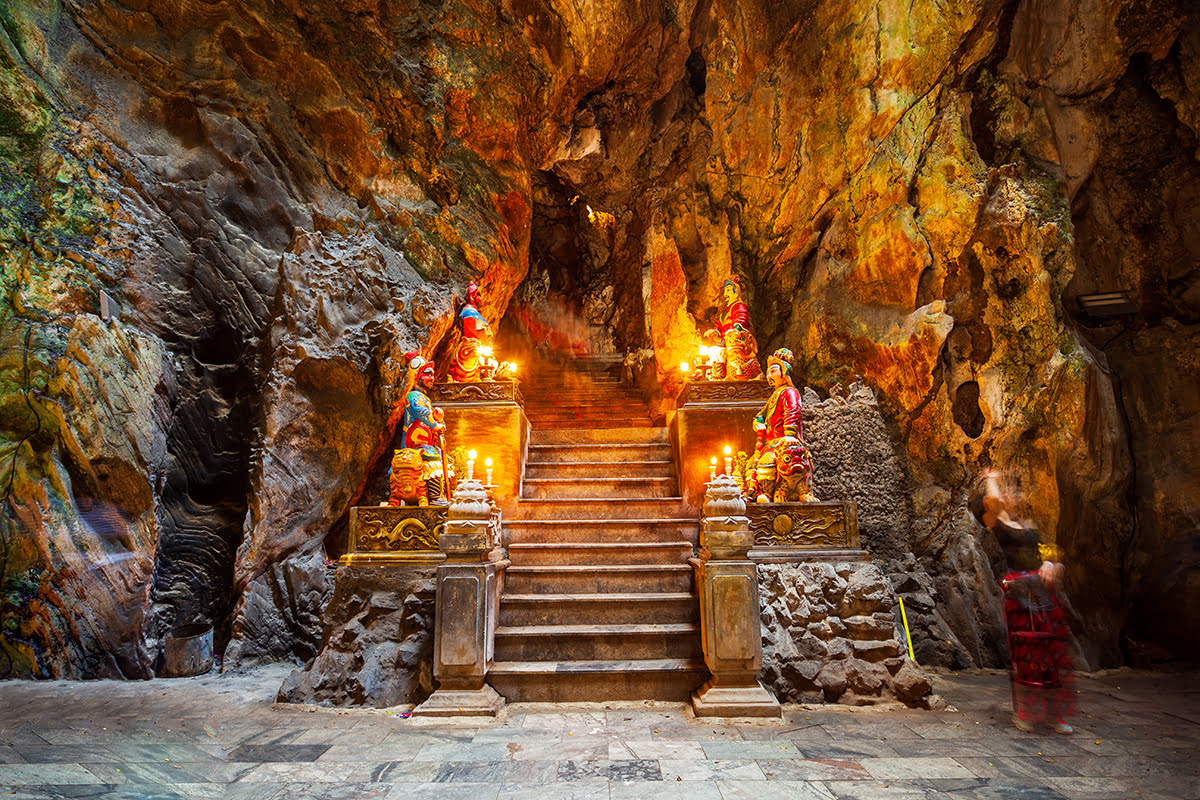
Related Posts
Non Nuoc Beach: The Famous Beach of Da Nang
Besides the Golden hands bridge – a global hit, Da Nang city also has beautiful beaches. If looking for somewhere
How to Get from Da Nang to My Son Sanctuary
Known as ‘the Angkor Wat of Vietnam’, My Son sanctuary boasts of its sophisticated temples dating back from 4th century.
Bach Ma National Park: Hiking, Trekking in Da Nang and Hoi An
Two best places for trekking and hiking in and near Da Nang are Son Tra mountain (peninsula) and Bach Ma national
Am Phu Cave Complete Travel Guide
Although in the Marble mountains – the most visited attraction in Da Nang, travelers often miss Am Phu cave. One
Asia Park and Sun Wheel in Da Nang (Sun World Da Nang Wonders)
Have you ever seen the wheel of Da Nang? That is the Sun Wheel. It’s a part of greater Asia
How to Get to Golden Bridge from Da Nang
The Golden Bridge (aka the Golden Hands Bridge) in Da Nang is a must visit attraction in Vietnam today. Many
Da Nang Food Specialties: What to Eat in Da Nang
Da Nang is known as a food capital of central Vietnam. This city boasts many yummy dishes, prepared by distinctive
How to Visit Golden Bridge Vietnam
The Golden Hand Bridge of Ba Na hills today is a dream place to visit for many travelers. Since it
Da Nang Shore Excursions: Guided Tours From Tien Sa Port
Da Nang Vietnam today is one of stopovers for many cruises that travel from continent to continent, from country to
Han Market (Cho Han): Where to Shop in Da Nang?
In the heart of Da Nang, the Han market is a popular place for visitors to buy something to bring
Da Nang Cathedral (Da Nang Pink Church)
Da Nang became a French protectorate on 3rd October 1888, under the name “Tourane”. By the Han river, the colonists designed
Things to Do in Ba Na Hills Besides Golden Bridge
According to local authorities, 50% of visitors coming to Da Nang and Hoi An visit the Ba Na hills. In
Da Nang Half Day Tours
In addition to day trips, travelers have many options of half-day tours in Da Nang to choose from. Not to
Da Nang Private Car and Driver
Your next holiday destination is Da Nang? You prefer to travel by yourself? Hiring a private car is one of
Da Nang and Hoi An Itinerary for Visitors Staying Overnight in Hoi An
Da Nang and Hoi An are twin cities in the heart of Central Vietnam. Both are popular tourist destinations for
Da Nang Things to Do: Guide to What to Do in Da Nang Vietnam
Unquestionably, Da Nang deserves a holiday trip from all types of traveller. Firstly, due to the weather. It has a
Da Nang Best Things to Do and Reasons
Da Nang is the largest tourist center in Central Vietnam. It owns fascinating natural and cultural places that attract both
How to Get From Hoi An to Da Nang
Da Nang is the neighbouring city of Hoi An. It's the capital of Central Vietnam and has the most important
Hoi An or Da Nang: Which is Better?
Da Nang and Hoi An are located in Central Vietnam, with a distance of roughly 30 km. To the north,
My Son Sanctuary Tour
My Son Sanctuary is a Unesco world heritage site, attracting 450,000 visitors in recent years. It’s the best remains left






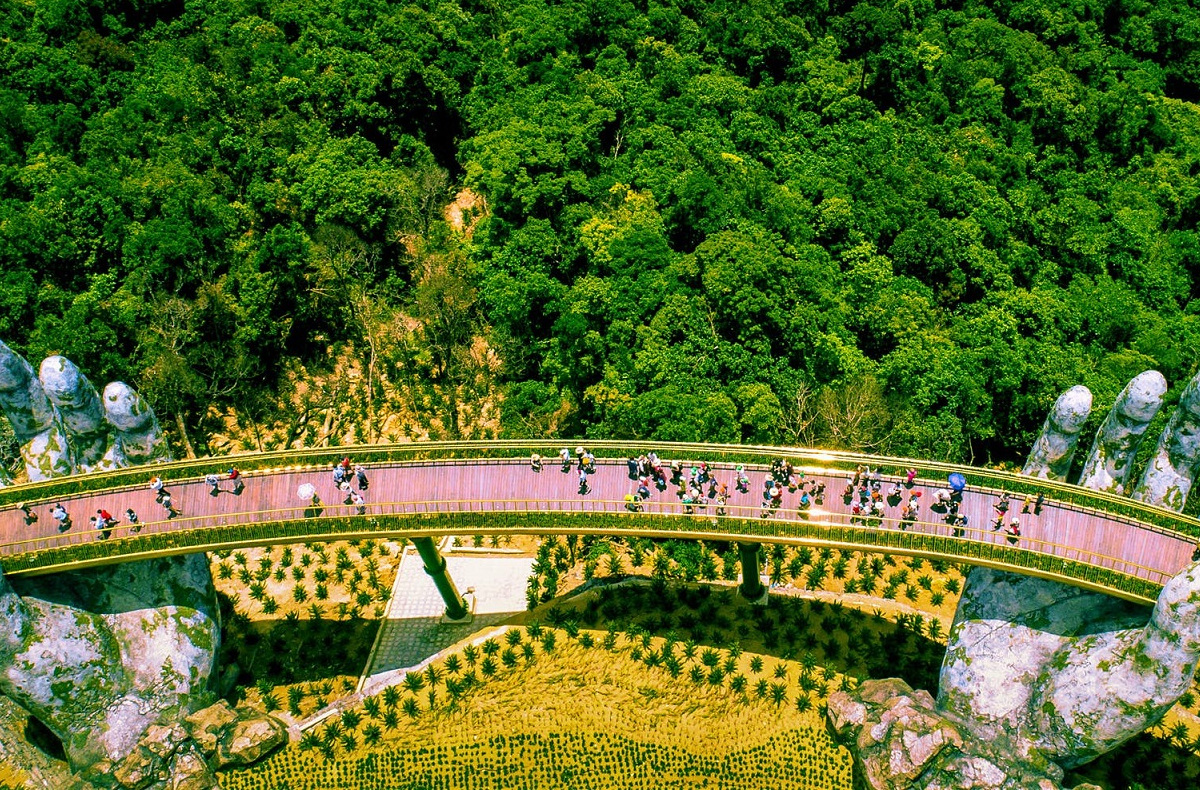






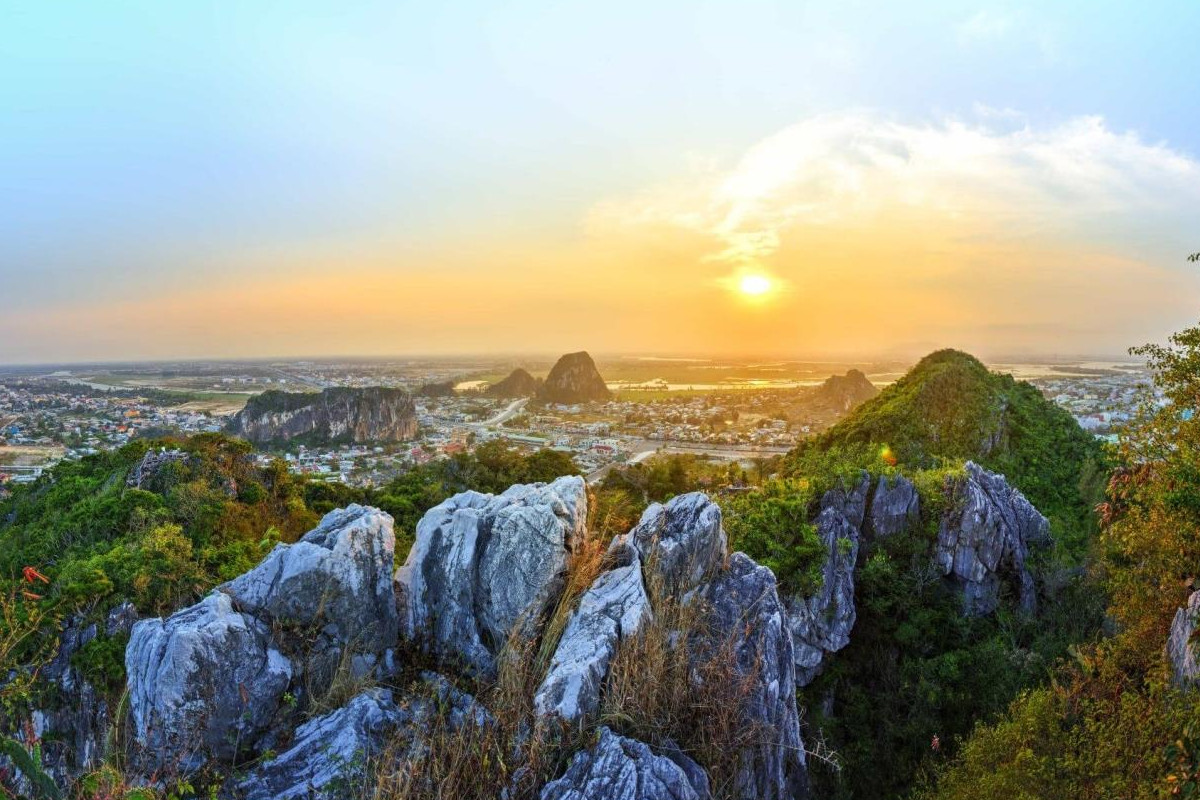




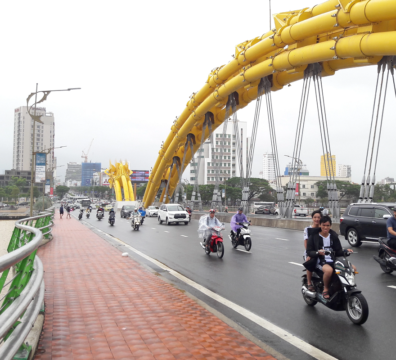



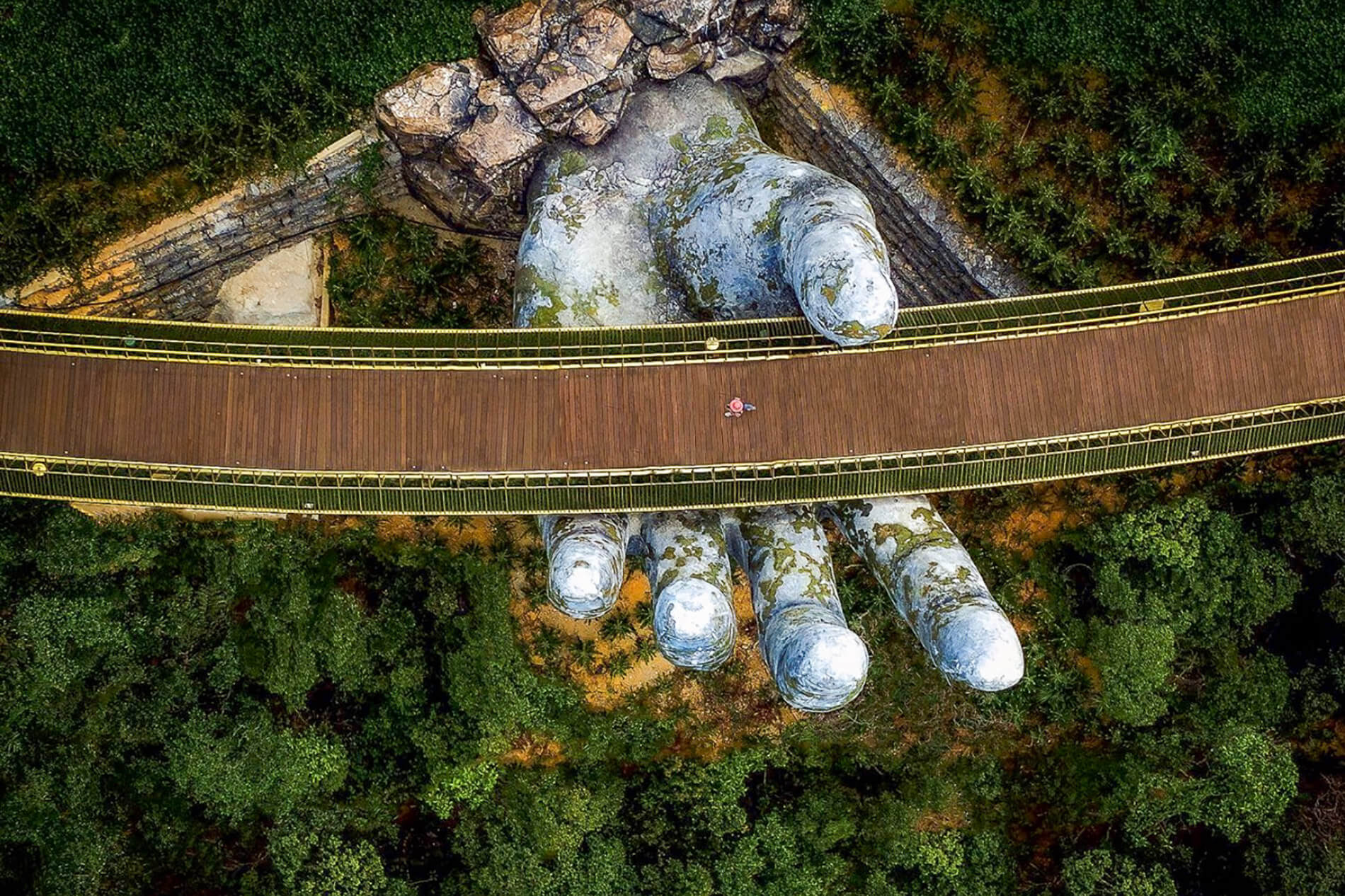

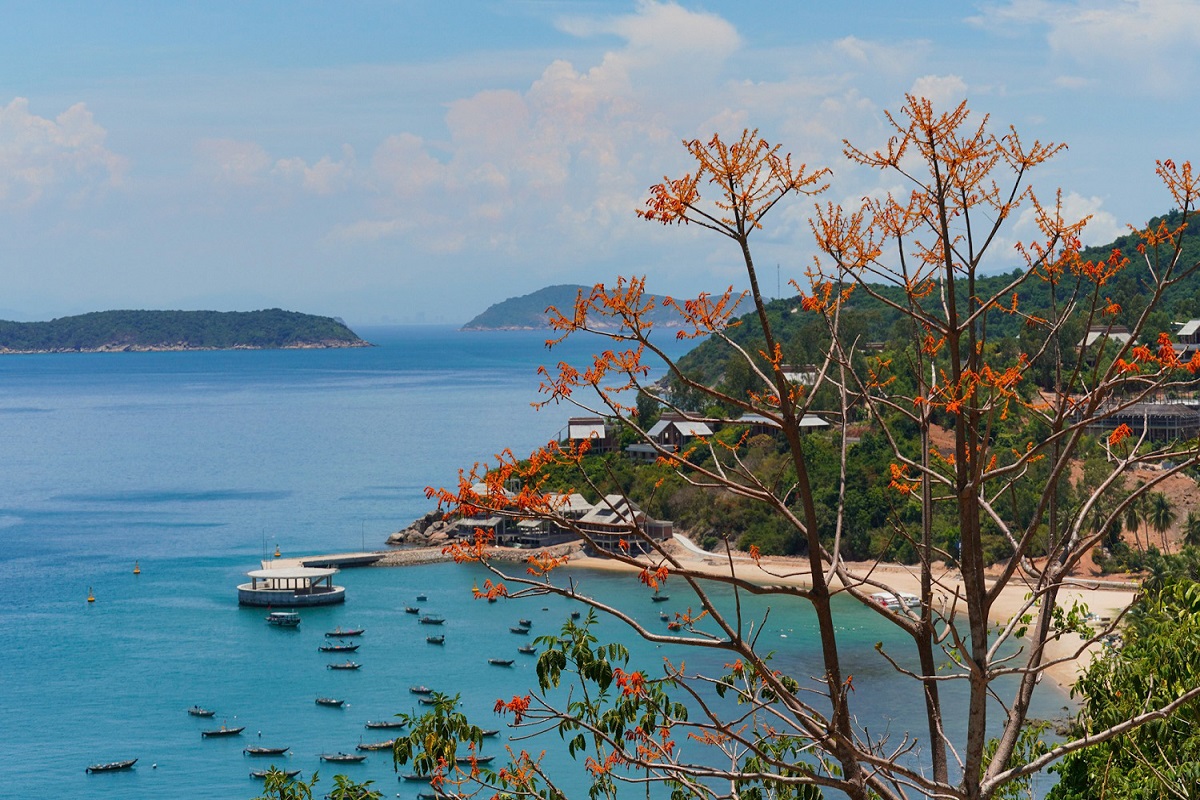







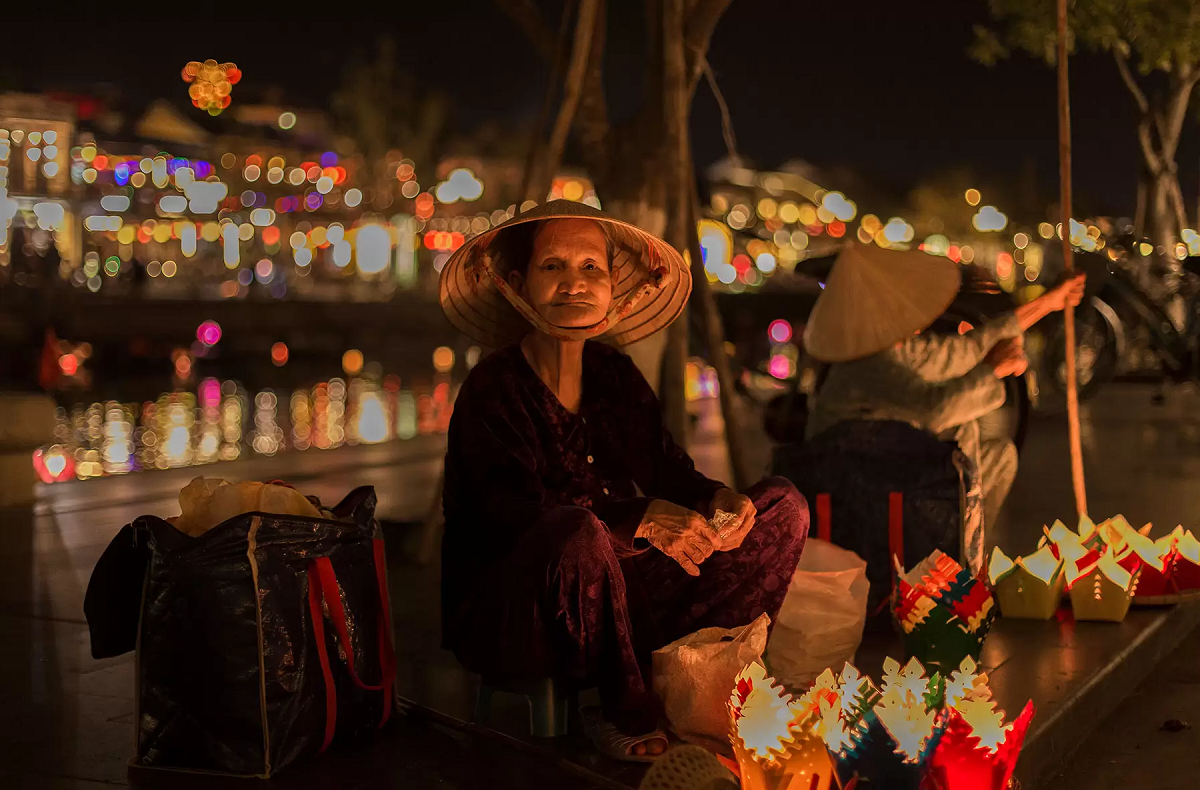

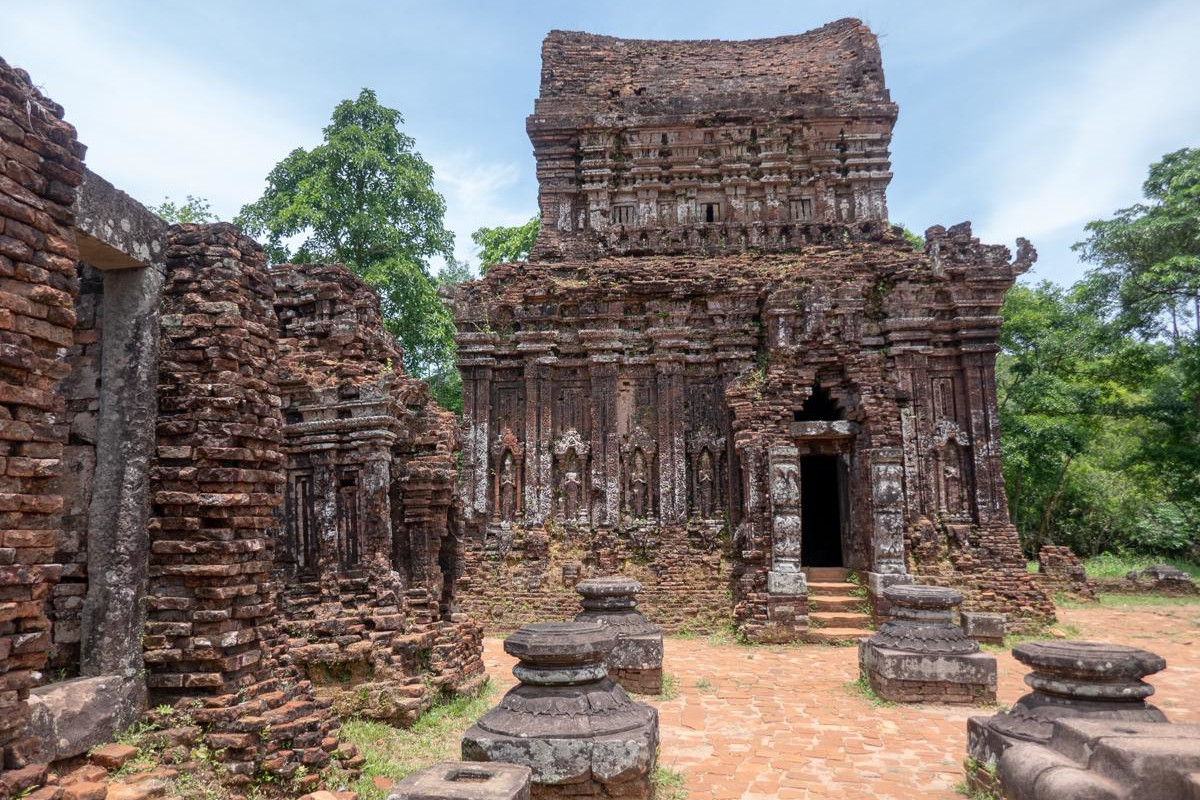

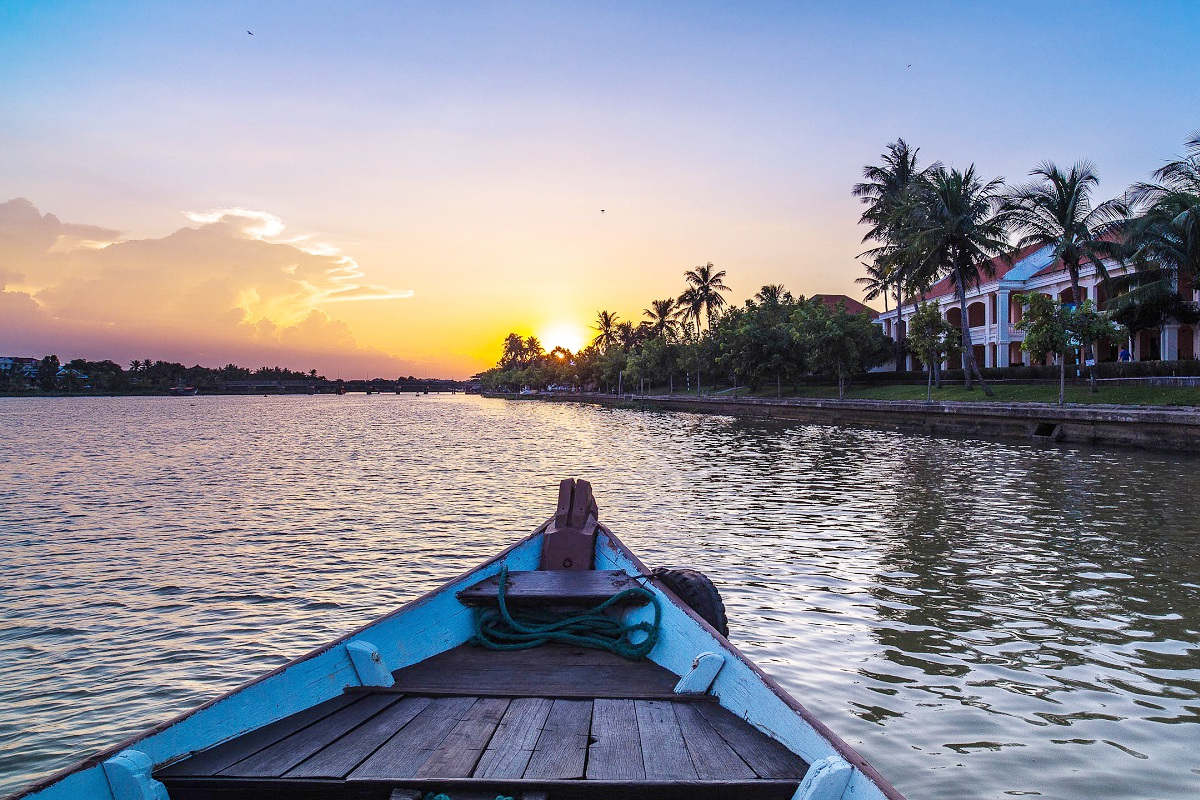





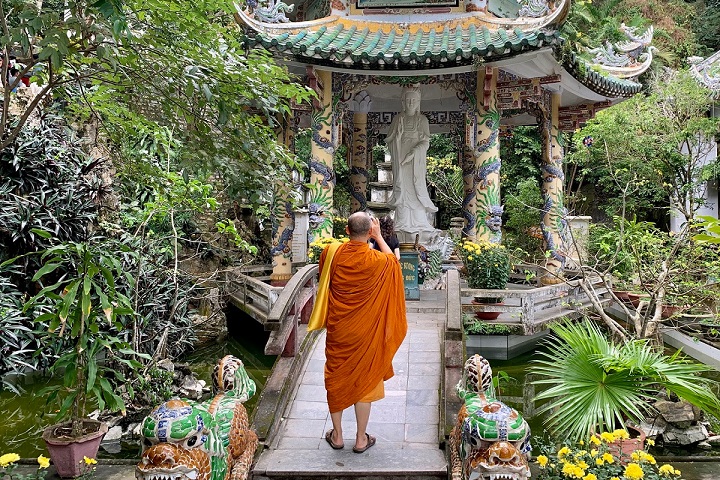













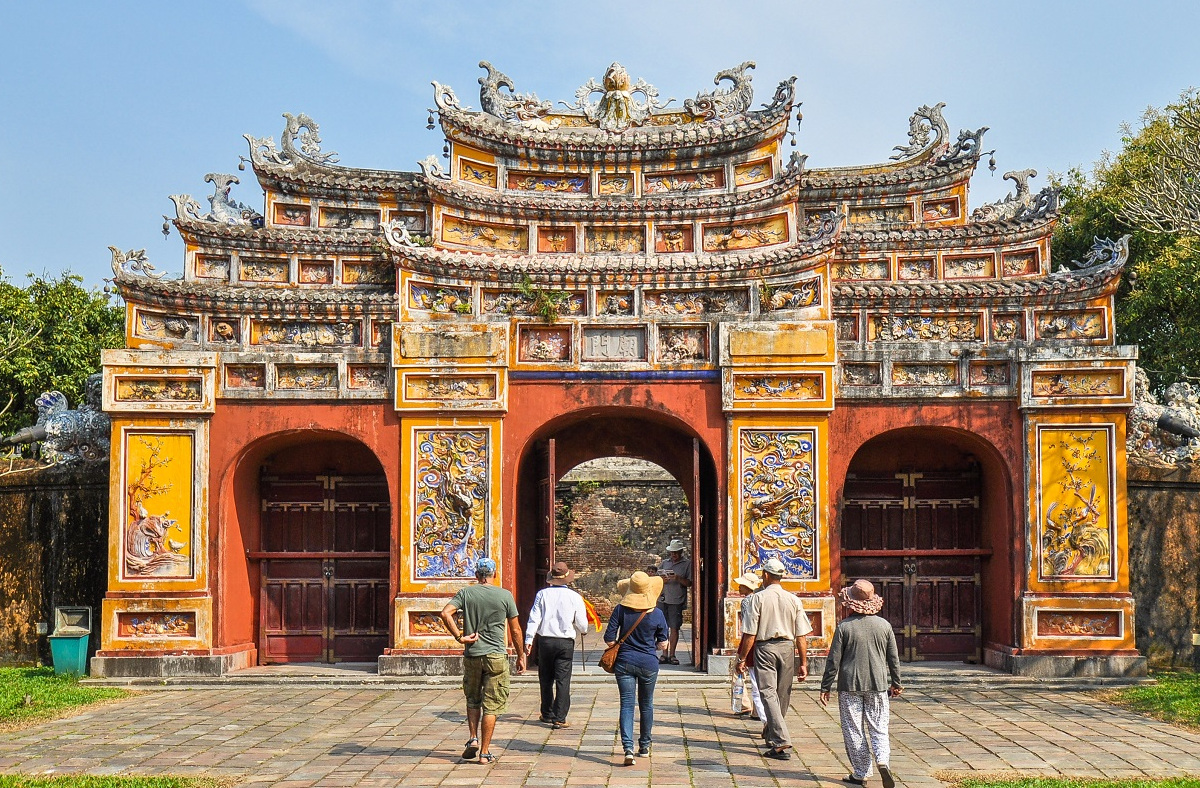









Leave a Reply